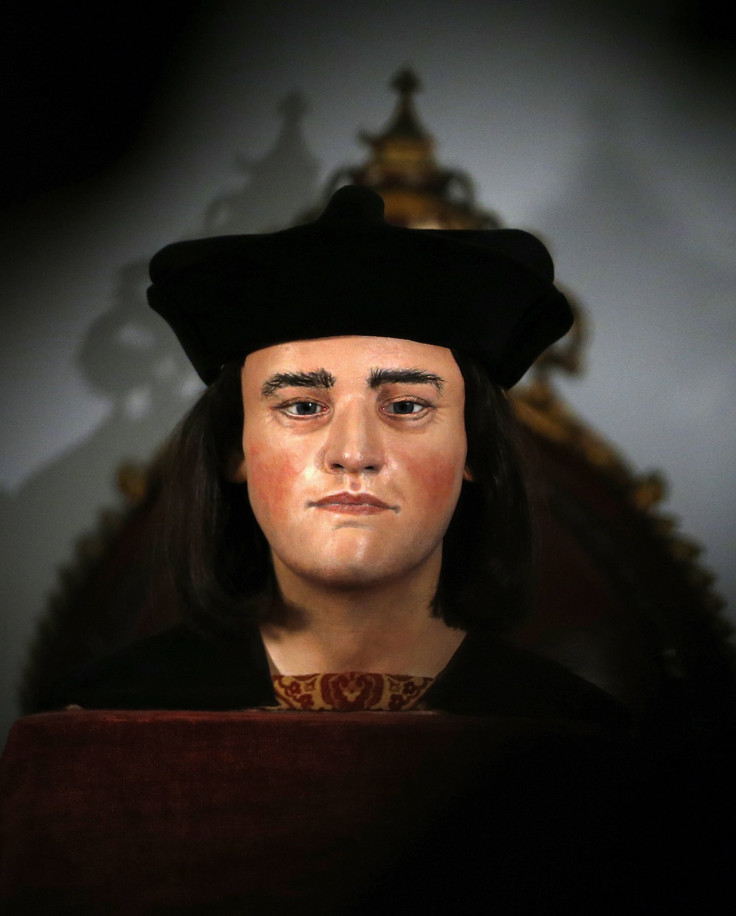Richard III reinterment in Leicester: Facts about England's last warrior king

Richard III's skeleton is finally being reinterred in a specially-made tomb at Leicester Cathedral, some 527 years after it was first buried following his death at the Battle of Bosworth Field.
In the time since it was discovered under a Leicester car park in 2012, at the site of the city's former Greyfriars monastery, it has been analysed by scientists hoping to learn more about the king and the life he led.
Here are some interesting facts about Richard III.
He was born on 2 October 1452, at Fotheringhay Castle in Northamptonshire.
Richard's mother was Cecily Neville and his father Richard Plantagenet, Duke of York. He was the youngest of four brothers, the eldest being Edward (who would become Edward IV) and the middle two being Edmund (who died aged 17 as a Lancastrian prisoner of war) and George (who Edward would later have executed for treason, mythically by drowning in a vat of his favourite wine). He also had three older sisters, Anne, Elizabeth and Margaret.
He was Henry VIII's great uncle.
Henry VIII was son of the first Tudor king Henry VII, who defeated Richard III at the Battle of Bosworth. Henry VIII's mother was Elizabeth of York, daughter of Edward IV, Richard's brother.
He was the last of the Plantagenet kings.
Before Richard III had been a Plantagenet dynasty dating back to the coronation of their first king, Henry II, in 1154. When Richard III was poleaxed to death at Bosworth, and Henry VII took the throne, the Plantagenets were out. Though Henry VII married a Plantagenet, so they're all related anyway.
Though he had a curved spine, he did not have a withered arm or a limp.
Various mythology has been passed down about Richard III, mostly stemming from Sir Thomas Moore's unforgiving, and some say libellous, history of the king in 1513. One of those was that he was a hunchback with a withered arm and a limp. Richard certainly had a curvature of his spine because of a condition called scoliosis, but scientific research of his newly discovered remains suggest that he would not necessarily have had a hunched back because of this, nor did his bones show evidence of a severely withered arm or leg problems to give him a limp.
His reign is the shortest of any coronated monarch since the Battle of Hastings in 1066.
At just 777 days, from 26 June 1483 to 22 August 1485, Richard III's reign was slender, though he achieved much during his short tenure on the throne. Though Edward VIII's reign was shorter at 11 months, he was never actually coronated before he abdicated.
He made pioneering reforms of the English legal system.
He used his short reign and the even shorter Parliament over which he watched to introduce a number of new reforms to the English judicial system. Among them were the introduction of a bail system, so people could not be unreasonably imprisoned before trial and a ban on the confiscation of assets by law enforcers until an individual had been convicted. He also brought in several anti-corruption and anti-fraud protections.
"The bulk of these acts therefore reveal a monarch keen to reform the justice system by purging it of various oppressive practices that had been particularly hard on ordinary people, and at the same time to encourage the growth of English trade," according to the Richard III – Boar & Banner website.
He was the last English monarch to die in battle.
On 22 August 1485, Richard III was killed during the Battle of Bosworth Field during the War of the Roses, a fight between the House of York and the House of Lancaster. Accounts of the battle suggest that Richard III had spotted Henry VII and rode out to confront – and kill – him. But Richard III, after a number of defections by groups supposed to be fighting on his side, found himself surrounded. He died after a number of blows to the head and body by a poleaxe, said to be in the hands of a Welsh knight called Rhys ap Thomas. It was the last time an English king would die in battle, causing some to refer to Richard III as the country's last warrior king.
© Copyright IBTimes 2025. All rights reserved.






















